What is Personal Protective Equipment (PPE)?
Personal Protective Equipment (PPE) is specialized clothing, equipment, or accessories that are designed to protect individuals from potential hazards, risks, or injuries. These Risks or hazards may be physical, chemical, biological, or radiological. All Personal protective equipment must be designed according to the standard. we also need to train the workers to properly use the protective equipment.
Why Personal Protective Equipment(PPE) is important?
- PPE protects workers from various hazards in the workplace, such as chemicals, sharp objects, loud noises, flying particles, and extreme temperatures.
- Many industries have regulations and standards that require employers to provide appropriate PPE to their employees.
- PPE helps mitigate risks by creating a barrier between workers and hazards.
- When workers feel safe and protected, they are more likely to focus on their tasks.
- Investing in PPE can lead to cost savings in the long run by reducing the frequency and severity of workplace injuries.
- Providing proper PPE demonstrates a company's commitment to safety.
There are many types of personal protective equipment including
Types of Personal Protective Equipment (PPE)
- Head Protection
- Eye and Face Protection
- Hearing Protection
- Respiratory Protection
- Hand and Arm Protection
- Foot and Leg Protection
- Body Protection
Head Protection of PPE
The most common types of head protection are Helmets, hard hats, bump caps, and hairnets. It protects the head from falling objects, electrical hazards, or head injuries. They are commonly used in manufacturing, construction, mining and other industries. Head protective equipment is made from durable and flexible materials like high-density polyethene (HDPE) or acrylonitrile butadiene styrene (ABS). Head protective helmets are organized in different classes according to the type of industry or type of work nature. For example, Class G helmets are used in general impacts and Class E is used to protect against Electrical hazards.
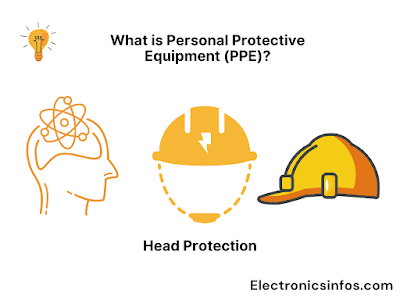 |
| What is Personal Protective Equipment (PPE)? |
Eye and Face Protection of PPE
Eye and face protection is a critical component of Personal Protective Equipment (PPE). These are essential for protecting eyes from impacts, flying debris, and particles. Safety glasses, goggles, face shields, and welding helmets shield the eyes and face from chemicals, flying particles, radiation, or intense light. eye and face protection equipment also provide UV protection. Face shields offer full-face protection against impacts, chemical splashes, and airborne particles. They are commonly used in industries like construction, manufacturing, and laboratories.
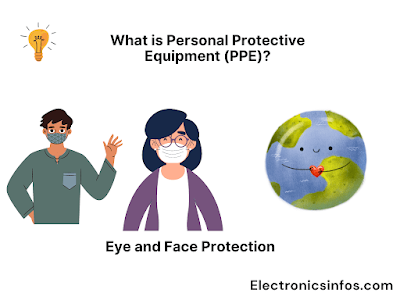 |
| What is Personal Protective Equipment (PPE)? |
Hearing Protection of PPE
Hearing Protection is an important part of Personal protective equipment. Hearing tools including Earplugs and earmuffs help reduce exposure to excessive noise levels. These are small inserts that are placed into the ear canal to block or reduce noise. They are made of foam, silicone, or rubber. Earplugs are effective for moderate noise levels and are comfortable for extended wear.
Earmuffs are ear coverings with cushioned pads that seal around the ears to block out noise. They are adjustable for a comfortable fit and provide protection against high noise levels. Hearing protection devices are rated based on their Noise Reduction Rating, which indicates the level of noise reduction they provide in decibels (dB). A higher NRR indicates greater noise reduction capability.
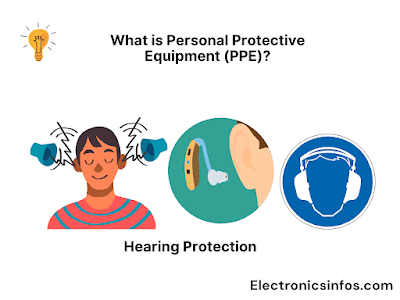 |
| What is Personal Protective Equipment (PPE)? |
Respiratory Protection of PPE
Respiratory protection is critical in environments where workers are exposed to airborne contaminants, gases, vapours, or particulates. Respirators are devices that cover the nose and mouth or the entire face to protect against inhalation of hazardous substances. They are classified into two main types: air-purifying respirators (APRs) and supplied-air respirators (SARs). Respiratory protection tools including Respirators, masks, and filters are used to protect against inhalation of hazardous substances, such as dust, fumes, gases, or airborne pathogens. Filters are labeled with N95, N99, N100, P95, P99, or P100 based on their filtration efficiency.
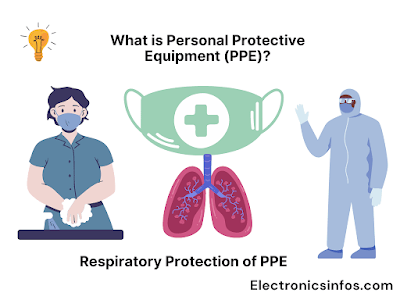 |
| What is Personal Protective Equipment (PPE)? |
Hand and Arm Protection of PPE
Hand and arm protection are crucial aspects of Personal Protective Equipment (PPE) to prevent injuries, chemical exposure, and other hazards in the workplace. hand and arm protection tools include Gloves, gauntlets, and arm sleeves to shield against cuts, abrasions, chemicals, heat, or biological hazards. Gloves are the most common form of hand protection. its different types include Mechanical Hazard Gloves, Chemical-Resistant Gloves, Heat-Resistant Gloves, Cold-Resistant Gloves and electrically insulating Gloves. Arm sleeves or gauntlets provide protection for the arms against cuts, abrasions, heat, and chemical exposure. They are often used in conjunction with gloves for comprehensive hand and arm protection. Gloves and sleeves are made from various materials such as leather, fabric, rubber, neoprene, nitrile, and PVC.
Foot and Leg Protection of PPE
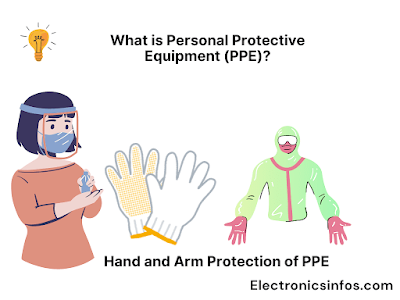 |
| What is Personal Protective Equipment (PPE)? |
Leg protection includes items such as leg guards, shin guards, and leggings designed to protect the lower legs from cuts, abrasions, and impact injuries. safety shoes are designed to protect the feet from various hazards, including impact, compression, punctures, and electrical shocks.Safety toe caps can be integrated into regular footwear to provide toe protection against impacts and compression.
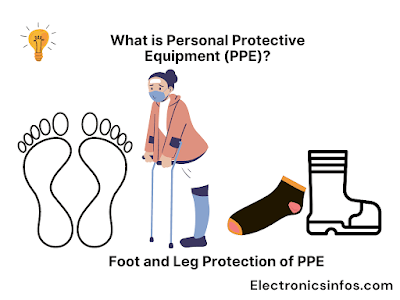 |
| What is Personal Protective Equipment (PPE)? |
Body Protection of PPE
Body protection is a vital component of Personal Protective Equipment (PPE) to safeguard workers from various hazards. body protection includes Coveralls, aprons, vests, and full-body suits that provide protection against chemicals, heat, biological agents, or physical hazards.
Coveralls and overalls are one-piece garments that provide full-body coverage to protect against contaminants, dirt, chemicals, and splashes.
Aprons are worn over clothing to protect the front of the body from spills, splashes, and contamination. Flame-resistant (FR) clothing is made from fire-retardant materials to protect against thermal hazards, flames, and heat.
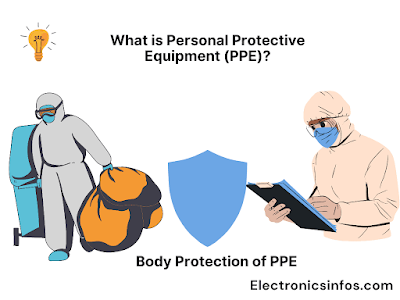 |
| What is Personal Protective Equipment (PPE)? |
How To Select Proper Personal Protective Equipment?
Selecting and using personal protective equipment (PPE) correctly is crucial to ensure maximum protection against workplace hazards.

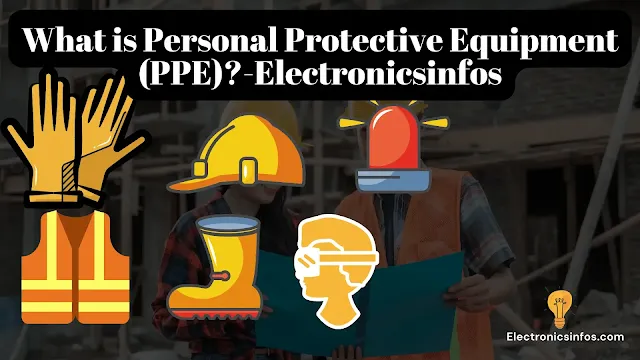
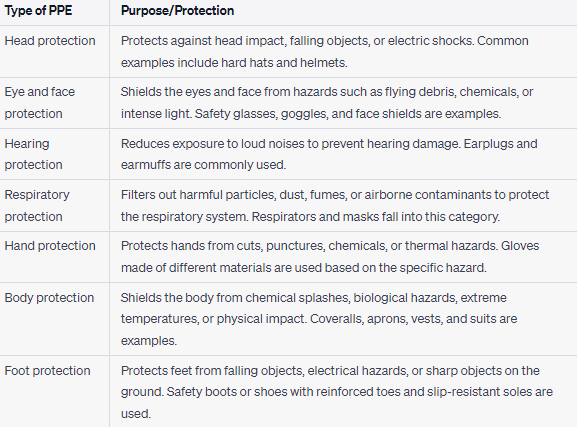
.png)



0 Comments
please do not insert spam links